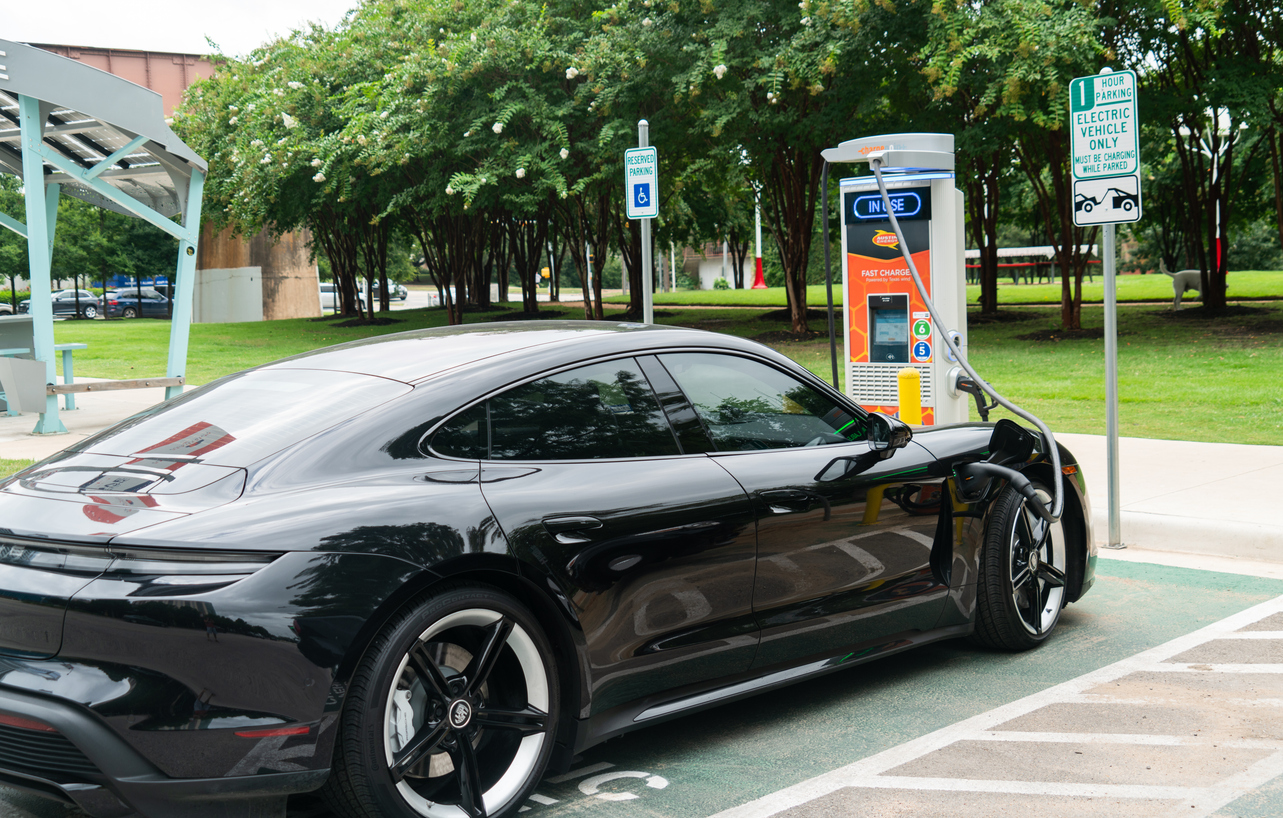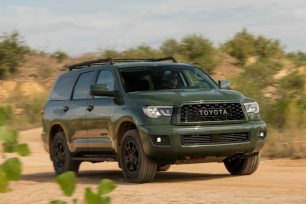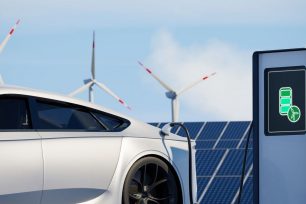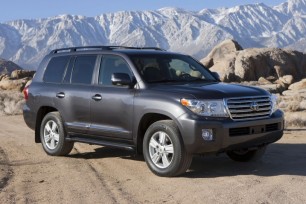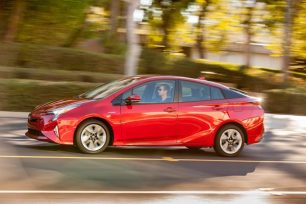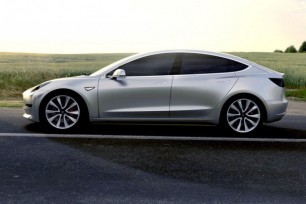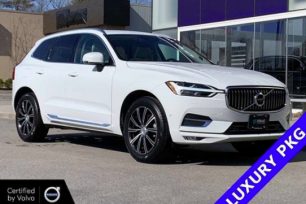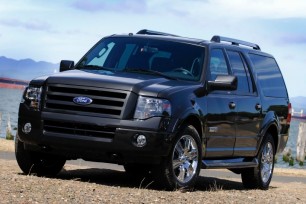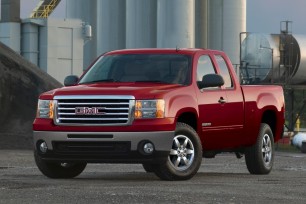Highlights:
- Electric cars are driven 20 percent less than gasoline cars; combined with their higher prices they cost 63.6 percent more for every 1,000 miles driven per year
- Hybrids and plug-in hybrids are also driven less than gasoline models, but only by 2.7 and 4.8 percent, respectively, making their cost-per-1,000 miles per year much closer
- The average electric car costs $5,108 for every 1,000 miles per year it’s driven compared to $3,056 for a hybrid car, $3,123 for a gasoline car, and $4,351 for a plug-in hybrid
- The Porsche Taycan EV is the most expensive alternative-fuel car to drive, costing over $22,000 for every 1,000 miles it’s driven per year, followed by the Porsche Cayenne plug-in hybrid at $14,681 and the Tesla Model S at $11,623
- The Honda Insight Hybrid is the least expensive alternative fuel car to drive, costing $1,463 per 1,000 miles per year, followed by the Hyundai Ioniq Hybrid at $1,813 and Toyota Corolla Hybrid at $1,857
When comparing how people use gasoline, hybrid, and electric vehicles, 3-year-old gas cars are driven 12,813 miles a year while EVs are driven 20 percent less, or 10,256 miles. Plug-in hybrids are driven 12,199 miles, or 4.8 percent less than gasoline cars, while standard hybrids are driven 12,471 miles, or 2.7 percent less than gasoline models.
“Range anxiety and charging infrastructure are top-of-mind for EV drivers, and those factors likely limit how far owners will drive them,” said Karl Brauer, iSeeCars Executive Analyst. “Hybrids and plug-in hybrids, where all-electric battery range is limited but range anxiety isn’t a factor, are driven only slightly less than gasoline cars, as reflected in their similar yearly mileage.”
| Average Miles Driven per Year for 3-Year-Old Gas Cars, EVs and Hybrids- iSeeCars Study | ||
| Drivetrain | Avg Miles Driven per Year | Compared to Gas Cars |
| Gas Cars | 12,813 | -- |
| EVs | 10,256 | -20.0% |
| Plug-In Hybrids | 12,199 | -4.8% |
| Hybrids | 12,471 | -2.7% |
The Most Driven Electric Vehicles
Tesla’s are driven more than any other electric vehicle. The Model 3, X, and Y all cover more than 11,000 miles a year, which is above the EV average of 10,256 annual miles. The Model S averages only 8,293 miles a year, or 19 percent less than the average EV, making it one of the most expensive electric cars to operate on a per-miles basis (see below for more info).| The Most Driven 3-Year-Old EVs - iSeeCars Study | |||
| Rank | Model | Avg Miles Driven per Year | % Compared to EV Average |
| 1 | Tesla Model 3 | 11,959 | 16.6% |
| 2 | Tesla Model X | 11,467 | 11.8% |
| 3 | Tesla Model Y | 11,335 | 10.5% |
| EV Average | 10,256 | -- | |
| 4 | Hyundai Kona Electric | 9,275 | -9.6% |
| 5 | Ford Mustang Mach-E | 9,044 | -11.8% |
| 6 | Audi e-tron | 8,716 | -15.0% |
| 7 | Volkswagen ID.4 | 8,336 | -18.7% |
| 8 | Audi e-tron Sportback | 8,335 | -18.7% |
| 9 | Tesla Model S | 8,293 | -19.1% |
| 10 | Volvo XC40 Recharge | 7,943 | -22.5% |
| 11 | Chevrolet Bolt EV | 7,284 | -29.0% |
| 12 | Nissan LEAF | 7,180 | -30.0% |
| 13 | Polestar 2v | 7,008 | -31.7% |
| 14 | BMW i3 | 6,527 | -36.4% |
| 15 | Porsche Taycan | 6,308 | -38.5% |
The Most Driven Plug-In Hybrid Vehicles
Plug-in hybrids (PHEVs) cost more than hybrids but less than electric vehicles, and their average driven miles per year is relatively close to gasoline models. At more than 19,000 miles a year, the Chrysler Pacifica Hybrid minivan is driven over 50 percent further than the average PHEV, and 50 percent further than the average gasoline model.| The Most Driven 3-Year-Old Plug-In Hybrids - iSeeCars Study | |||
| Rank | Model | Avg Miles Driven per Year | % Compared to Plug-In Hybrid Average |
| 1 | Chrysler Pacifica Hybrid | 19,034 | 56.0% |
| Plug-In Hybrid Average | 12,199 | -- | |
| 2 | Toyota Prius Prime | 11,480 | -5.9% |
| 3 | Toyota RAV4 Prime | 11,091 | -9.1% |
| 4 | Volvo XC90 Recharge | 10,782 | -11.6% |
| 5 | Honda Clarity Plug-In Hybrid | 10,684 | -12.4% |
| 6 | Lincoln Aviator | 10,504 | -13.9% |
| 7 | BMW X5 | 10,272 | -15.8% |
| 8 | BMW 5 Series | 10,069 | -17.5% |
| 9 | Hyundai Ioniq Plug-In Hybrid | 9,869 | -19.1% |
| 10 | Volvo XC60 Recharge | 9,740 | -20.2% |
| 11 | Volvo S60 Recharge | 9,393 | -23.0% |
| 12 | BMW X3 | 9,359 | -23.3% |
| 13 | Jeep Wrangler Unlimited | 9,298 | -23.8% |
| 14 | Audi Q5 | 9,063 | -25.7% |
| 15 | BMW 3 Series | 8,942 | -26.7% |
| 16 | Porsche Cayenne | 7,628 | -37.5% |
The Most Driven Hybrids
The average hybrid is driven at almost the same level as gasoline models, with the top three hybrids (Honda Insight, Toyota Prius, and Hyundai Ioniq Hybrid) driven at least 20 percent further than the average gas car.| The Most Driven 3-Year-Old Hybrids - iSeeCars Study | |||
| Rank | Model | Avg Miles Driven per Year | % Compared to Hybrid Average |
| 1 | Honda Insight | 18,341 | 47.1% |
| 2 | Toyota Prius | 15,229 | 22.1% |
| 3 | Hyundai Ioniq Hybrid | 15,014 | 20.4% |
| 4 | Toyota Sienna | 14,375 | 15.3% |
| 5 | Ford Escape Hybrid | 13,993 | 12.2% |
| 6 | Toyota Highlander Hybrid | 13,312 | 6.7% |
| 7 | Toyota Camry Hybrid | 13,178 | 5.7% |
| 8 | Toyota Corolla Hybrid | 12,936 | 3.7% |
| 9 | Kia Sorento Hybrid | 12,917 | 3.6% |
| 10 | Ford F-150 | 12,855 | 3.1% |
| 11 | Honda Accord Hybrid | 12,622 | 1.2% |
| 12 | Toyota RAV4 Hybrid | 12,531 | 0.5% |
| Hybrid Average | 12,471 | -- | |
| 13 | Hyundai Elantra Hybrid | 12,324 | -1.2% |
| 14 | Hyundai Sonata Hybrid | 12,193 | -2.2% |
| 15 | Hyundai Santa Fe Hybrid | 11,701 | -6.2% |
| 16 | Toyota Avalon Hybrid | 11,647 | -6.6% |
| 17 | Lexus RX 450hL | 11,334 | -9.1% |
| 18 | Toyota Venza | 11,154 | -10.6% |
| 19 | Kia Niro | 11,121 | -10.8% |
| 20 | Ford Explorer Hybrid | 11,005 | -11.8% |
| 21 | Honda CR-V Hybrid | 10,963 | -12.1% |
| 22 | Lexus RX 450h | 10,113 | -18.9% |
| 23 | Lexus ES 300h | 9,771 | -21.7% |
| 24 | Lexus NX 300h | 9,309 | -25.4% |
| 25 | Lexus UX 250h | 9,044 | -27.5% |
EVs: The Most Expensive Cars Due To High Cost and Low Use
The limited use of EVs, combined with their higher list price, results in a 63.6 percent higher cost per 1,000 miles driven annually compared to gasoline cars. Plug-in hybrid vehicles cost 39.4 percent more than gasoline models, while standard hybrids actually cost 2.1 percent less than gasoline cars for every 1,000 driven miles per year.| Average Cost per 1k Miles Driven for 3-Year-Old Gas Cars, EVs and Hybrids - iSeeCars Study | ||||
| Drivetrain | Avg Miles Driven per Year | Avg New Price | Price per 1k Miles per Year | Compared to Gas Cars |
| Gas Cars | 12,813 | $40,009 | $3,123 | -- |
| EVs | 10,256 | $52,387 | $5,108 | 63.6% |
| Plug-In Hybrids | 12,199 | $53,081 | $4,351 | 39.4% |
| Hybrids | 12,471 | $38,113 | $3,056 | -2.1% |
Hybrids Are the Most Cost-Effective Vehicles, Even Better than Gasoline Cars
While electric vehicles have the most expensive drivetrain for their annual mileage, hybrids have the least expensive drivetrain – even cheaper than traditional gasoline models. This is because hybrid owners use their cars at almost the same rate as gasoline cars, while their average price is slightly lower than gasoline models.“Hybrids have become increasingly popular with consumers in recent years,” said Brauer. “And now many mainstream models, including the newest Toyota Camry, are only sold as a hybrid. This technology is set to become the dominant drivetrain throughout the industry.”
The Most Expensive EVs and Hybrid Cars per 1,000 Miles Driven: Luxury Cars
When ranked by cost per miles driven per year the Porsche Taycan is the most expensive car among EVs and hybrids, with a cost of $22,021 per 1,000 miles driven. Luxury cars are typically not driven as much as mainstream cars, but when combined with the higher cost of EVs and hybrids, these premium models become the most expensive cars per 1,000 miles.| Most Expensive 3-Year-Old EVs and Hybrids per 1k Miles Driven - iSeeCars Study | |||||
| Rank | Model | Drivetrain | Avg Miles Driven per Year | Avg New Price | Price per 1k Miles per Year |
| 1 | Porsche Taycan | EV | 6,308 | $138,914 | $22,021 |
| 2 | Porsche Cayenne | Plug-In Hybrid | 7,628 | $111,985 | $14,681 |
| 3 | Tesla Model S* | EV | 8,293 | $96,394 | $11,623 |
| 4 | Audi e-tron Sportback* | EV | 8,335 | $77,286 | $9,273 |
| 5 | Audi e-tron | EV | 8,716 | $76,515 | $8,779 |
| 6 | Polestar 2* | EV | 7,008 | $59,900 | $8,548 |
| 7 | Lincoln Aviator | Plug-In Hybrid | 10,504 | $80,952 | $7,707 |
| 8 | Volvo XC40 Recharge | EV | 7,943 | $59,098 | $7,440 |
| 9 | BMW i3 | EV | 6,527 | $48,456 | $7,424 |
| 10 | BMW X5 | Plug-In Hybrid | 10,272 | $75,483 | $7,348 |
| 11 | Tesla Model X* | EV | 11,467 | $82,979 | $7,236 |
| 12 | Audi Q5 | Plug-In Hybrid | 9,063 | $60,582 | $6,685 |
| 13 | Volvo XC90 Recharge | Plug-In Hybrid | 10,782 | $71,870 | $6,666 |
| 14 | Volvo XC60 Recharge | Plug-In Hybrid | 9,740 | $64,831 | $6,656 |
| 15 | BMW 5 Series | Plug-In Hybrid | 10,069 | $63,512 | $6,307 |
“At between 6,000 and 8,500 miles a year, luxury cars like the Porsche Taycan, Porsche Cayenne Plug-in Hybrid, and Tesla Model S are being driven far less than the average car,” said Brauer. “This makes their $95,000-plus price an expensive premium when measured against against the Tesla Model 3 for example, which costs only $3,500 per 1,000 miles per year, much closer to the average of $3,123 for gas cars.”
The Least Expensive Hybrid Cars per 1,000 Miles Driven
The Honda Insight Hybrid is the least expensive vehicle among EVs and hybrids, costing just $1,463 per 1,000 miles driven per year. It’s followed by the Hyundai Ioniq Hybrid at $1,813 per 1,000 miles and the Toyota Corolla Hybrid at $1,857 per 1,000 miles. Unfortunately, the Insight Hybrid and Ioniq Hybrid were canceled after the 2022 model year, but they remain available on the used car market.| Least Expensive 3-Year-Old Hybrids and Plug-In Hybrids per 1k Miles Driven - iSeeCars Study | |||||
| Rank | Model | Drivetrain | Avg Miles Driven per Year | Avg New Price | Price per 1k Miles per Year |
| 1 | Honda Insight | Hybrid | 18,341 | $26,836 | $1,463 |
| 2 | Hyundai Ioniq Hybrid | Hybrid | 15,014 | $27,225 | $1,813 |
| 3 | Toyota Corolla Hybrid | Hybrid | 12,936 | $24,023 | $1,857 |
| 4 | Toyota Prius | Hybrid | 15,229 | $28,644 | $1,881 |
| 5 | Hyundai Elantra Hybrid | Hybrid | 12,324 | $26,828 | $2,177 |
| 6 | Chrysler Pacifica Hybrid | Plug-In Hybrid | 19,034 | $44,130 | $2,319 |
| 7 | Ford Escape Hybrid | Hybrid | 13,993 | $33,508 | $2,395 |
| 8 | Toyota Camry Hybrid | Hybrid | 13,178 | $31,646 | $2,401 |
| 9 | Hyundai Sonata Hybrid | Hybrid | 12,193 | $31,658 | $2,596 |
| 10 | Honda Accord Hybrid | Hybrid | 12,622 | $32,862 | $2,604 |
| 11 | Kia Niro | Hybrid | 11,121 | $29,692 | $2,670 |
| 12 | Toyota Prius Prime | Plug-In Hybrid | 11,480 | $31,110 | $2,710 |
| 13 | Toyota RAV4 Hybrid | Hybrid | 12,531 | $35,002 | $2,793 |
| 14 | Kia Sorento Hybrid | Hybrid | 12,917 | $37,145 | $2,876 |
| 15 | Toyota Sienna | Hybrid | 14,375 | $42,508 | $2,957 |
The Most Expensive Gasoline Cars per 1,000 Miles Driven: Sports Cars
While electric vehicles and plug-in hybrids are among the most expensive vehicles on a cost-per-mile basis, high-performance sports cars still outrank them – even with a traditional gasoline drivetrain. Cars like the Porsche 911, Porsche 718 Cayman, and Lexus LC 500 are driven less than 5,000 miles a year, which translates to between $25,000 and $43,000 per 1,000 miles driven.| Most Expensive 3-Year-Old Gas Cars per 1k Miles Driven - iSeeCars Study | ||||
| Rank | Model | Avg Miles Driven per Year | Avg New Price | Price per 1k Miles per Year |
| 1 | Porsche 911 | 3,847 | $166,229 | $43,214 |
| 2 | Porsche 718 Cayman | 3,950 | $102,387 | $25,918 |
| 3 | Lexus LC 500 | 4,402 | $110,189 | $25,030 |
| 4 | Mercedes-Benz G-Class | 6,616 | $164,426 | $24,854 |
| 5 | Porsche 718 Boxster | 4,134 | $99,850 | $24,154 |
| 6 | Chevrolet Corvette | 3,600 | $86,406 | $24,004 |
| 7 | BMW 8 Series | 6,821 | $121,000 | $17,739 |
| 8 | Audi RS 7 | 7,586 | $133,242 | $17,563 |
| 9 | Mercedes-Benz S-Class | 7,334 | $127,334 | $17,363 |
| 10 | BMW M8 | 8,577 | $148,400 | $17,303 |
| 11 | Porsche Panamera | 7,166 | $114,469 | $15,975 |
| 12 | Jaguar F-TYPE | 5,545 | $87,388 | $15,761 |
| 13 | Audi RS Q8 | 9,149 | $138,046 | $15,089 |
| 14 | Mercedes-Benz AMG GT | 8,088 | $120,043 | $14,842 |
| 15 | BMW M5 | 8,687 | $121,556 | $13,993 |
| 16 | Maserati Ghibli | 6,693 | $90,584 | $13,533 |
| 17 | BMW X6 M | 9,403 | $124,581 | $13,249 |
| 18 | BMW M4 | 6,569 | $84,332 | $12,838 |
| 19 | Mercedes-Benz E-Class (convertible) | 6,723 | $82,084 | $12,209 |
| 20 | BMW X5 M | 9,984 | $121,253 | $12,145 |
The Least Expensive Gasoline Cars per 1,000 Miles Driven: Economy Cars
Low-priced economy cars remain the most cost-effective models. All of these cars cost less than $1,600 per 1,000 miles driven, or about one-third the average cost of an electric car and approximately half the price of the average gasoline or hybrid model.| Least Expensive 3-Year-Old Gas Cars per 1k Miles Driven - iSeeCars Study | ||||
| Rank | Model | Avg Miles Driven per Year | Avg New Price | Price per 1k Miles per Year |
| 1 | Chevrolet Spark | 17,593 | $14,805 | $842 |
| 2 | Nissan Versa | 19,323 | $17,765 | $919 |
| 3 | Hyundai Accent | 18,761 | $17,459 | $931 |
| 4 | Mitsubishi Mirage | 16,043 | $16,066 | $1,001 |
| 5 | Kia Rio | 15,423 | $17,008 | $1,103 |
| 6 | Chrysler Voyager | 22,482 | $29,483 | $1,311 |
| 7 | Chevrolet Malibu | 18,397 | $24,217 | $1,316 |
| 8 | Kia Rio 5-Door | 13,219 | $17,732 | $1,341 |
| 9 | Kia Soul | 15,300 | $20,601 | $1,346 |
| 10 | Toyota Corolla | 16,042 | $21,658 | $1,350 |
| 11 | Volkswagen Golf | 17,579 | $23,767 | $1,352 |
| 12 | Hyundai Venue | 15,248 | $20,640 | $1,354 |
| 13 | Mitsubishi Mirage G4 | 12,612 | $17,103 | $1,356 |
| 14 | Nissan Kicks | 16,538 | $22,703 | $1,373 |
| 15 | Kia Forte | 14,446 | $20,422 | $1,414 |
| 16 | Mitsubishi Outlander Sport | 16,427 | $23,906 | $1,455 |
| 17 | Volkswagen Passat | 17,608 | $26,226 | $1,489 |
| 18 | Volkswagen Jetta | 14,186 | $21,890 | $1,543 |
| 19 | Nissan Altima | 17,187 | $27,039 | $1,573 |
| 20 | Nissan Rogue Sport | 16,585 | $26,351 | $1,589 |
The Most-Driven EVs in the Top 50 Metro Areas by Population: Teslas Dominate
The most-driven EV in each of the nation’s top 50 metro areas is overwhelmingly a Tesla model, with the Model 3 being driven the most in 30 metro areas.
| Most-Driven 3-Year-Old EV in Top 50 Metro Areas by Population - iSeeCars Study | ||||
| Metro Area | Most-Driven EV | Avg Miles Driven per Year | Avg New Price | Price per 1k Miles per Year |
| Cincinnati, OH | Tesla Model 3 | 18,391 | $40,510 | $2,203 |
| Raleigh-Durham (Fayetteville), NC | Tesla Model 3 | 17,394 | $41,990 | $2,414 |
| Oklahoma City, OK | Tesla Model 3 | 16,690 | $40,421 | $2,422 |
| Miami-Ft. Lauderdale, FL | Tesla Model 3 | 16,659 | $39,927 | $2,397 |
| Kansas City, MO | Tesla Model 3 | 16,321 | $40,235 | $2,465 |
| Detroit, MI | Tesla Model 3 | 16,201 | $40,990 | $2,530 |
| Greenville-Spartanburg, SC | Tesla Model Y | 15,765 | $53,740 | $3,409 |
| St. Louis, MO | Tesla Model 3 | 15,765 | $39,990 | $2,537 |
| Tampa-St Petersburg (Sarasota), FL | Tesla Model 3 | 15,248 | $39,817 | $2,611 |
| Seattle-Tacoma, WA | Tesla Model 3 | 14,867 | $41,721 | $2,806 |
| Louisville, KY | Tesla Model Y | 14,716 | $51,808 | $3,521 |
| San Diego, CA | Polestar 2 | 14,690 | $59,900 | $4,078 |
| Orlando-Daytona Beach, FL | Tesla Model 3 | 14,494 | $40,220 | $2,775 |
| Columbus, OH | Tesla Model Y | 14,464 | $49,929 | $3,452 |
| Milwaukee, WI | Tesla Model 3 | 14,314 | $43,323 | $3,027 |
| Grand Rapids-Kalamazoo, MI | Tesla Model 3 | 13,888 | $44,755 | $3,223 |
| Jacksonville, FL | Tesla Model 3 | 13,874 | $41,291 | $2,976 |
| Indianapolis, IN | Tesla Model 3 | 13,805 | $43,098 | $3,122 |
| Philadelphia, PA | Tesla Model 3 | 13,787 | $41,570 | $3,015 |
| Salt Lake City, UT | Tesla Model 3 | 13,762 | $45,171 | $3,282 |
| Baltimore, MD | Tesla Model 3 | 13,649 | $42,481 | $3,112 |
| Portland, OR | Tesla Model 3 | 13,492 | $42,104 | $3,121 |
| Atlanta, GA | Tesla Model 3 | 13,400 | $40,977 | $3,058 |
| Harrisburg-Lancaster-York, PA | Tesla Model Y | 13,373 | $50,164 | $3,751 |
| Dallas-Ft. Worth, TX | Tesla Model X | 13,371 | $83,990 | $6,281 |
| Greensboro-Winston Salem, NC | Tesla Model 3 | 13,035 | $41,490 | $3,183 |
| Nashville, TN | Tesla Model 3 | 12,913 | $42,713 | $3,308 |
| Birmingham, AL | Tesla Model Y | 12,896 | $51,913 | $4,026 |
| Charlotte, NC | Tesla Model 3 | 12,801 | $41,748 | $3,261 |
| Chicago, IL | Tesla Model X | 12,768 | $82,717 | $6,479 |
| Houston, TX | Tesla Model 3 | 12,680 | $40,914 | $3,227 |
| Phoenix, AZ | Tesla Model 3 | 12,585 | $41,142 | $3,269 |
| Cleveland-Akron (Canton), OH | Tesla Model X | 12,438 | $79,990 | $6,431 |
| West Palm Beach-Ft. Pierce, FL | Tesla Model 3 | 12,389 | $41,860 | $3,379 |
| Norfolk-Portsmouth-Newport News,VA | Tesla Model 3 | 12,313 | $44,847 | $3,642 |
| Los Angeles, CA | Tesla Model X | 12,280 | $82,390 | $6,709 |
| New York, NY | Tesla Model 3 | 12,230 | $42,794 | $3,499 |
| Washington, DC (Hagerstown, MD) | Tesla Model 3 | 12,150 | $42,445 | $3,493 |
| Boston, MA-Manchester, NH | Tesla Model Y | 11,907 | $50,657 | $4,254 |
| San Antonio, TX | Tesla Model 3 | 11,838 | $43,502 | $3,675 |
| San Francisco-Oakland-San Jose, CA | Tesla Model X | 11,808 | $81,569 | $6,908 |
| Denver, CO | Audi e-tron Sportback | 11,801 | $78,500 | $6,652 |
| Las Vegas, NV | Tesla Model Y | 11,783 | $50,466 | $4,283 |
| Austin, TX | Tesla Model Y | 11,577 | $49,459 | $4,272 |
| Hartford & New Haven, CT | Tesla Model X | 11,553 | $79,990 | $6,924 |
| Minneapolis-St. Paul, MN | Tesla Model X | 11,528 | $84,990 | $7,372 |
| Sacramento-Stockton-Modesto, CA | Tesla Model 3 | 11,324 | $41,595 | $3,673 |
| Albuquerque-Santa Fe, NM | Tesla Model Y | 11,102 | $52,298 | $4,711 |
| Memphis, TN | Tesla Model Y | 10,911 | $50,300 | $4,610 |
| Pittsburgh, PA | Tesla Model Y | 10,792 | $50,990 | $4,725 |
Methodology
iSeeCars analyzed the odometer readings from over 1.3 million 3-year-old used cars sold from November 2022 to April 2023, and also compared these mileage numbers by model to the list prices of the same models when they were sold new. MSRP was used for cars from Tesla and Polestar, as well as the Audi e-tron Sportback. The average miles driven per year were calculated for each model as well as drivetrain, and the average new car price was expressed as a cost per 1,000 miles driven per year. The latter was used to rank models from most expensive to least expensive with respect to their driving patterns.
About iSeeCars.com

